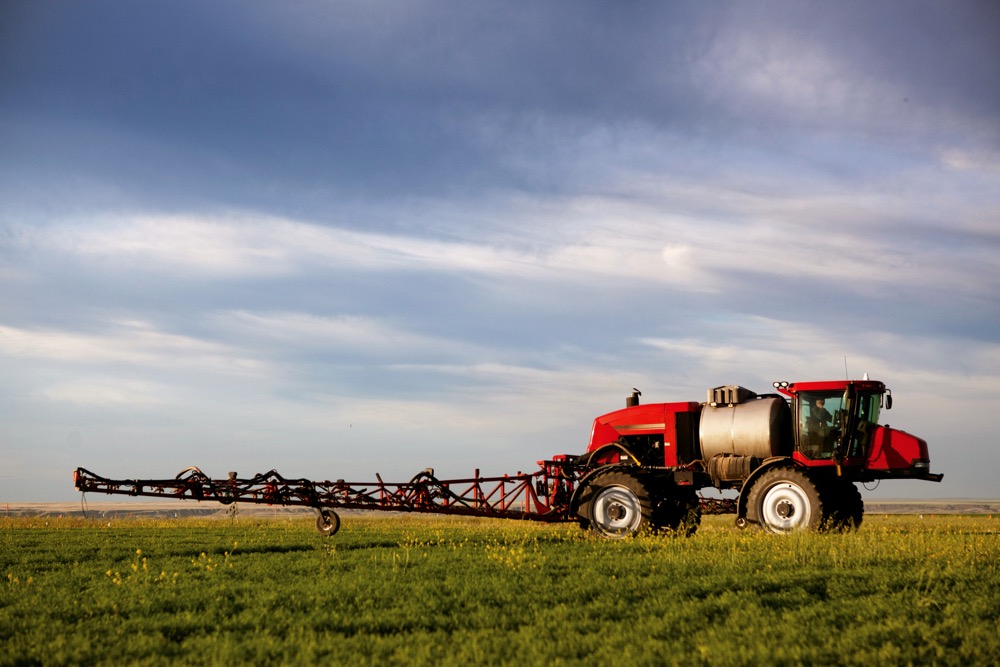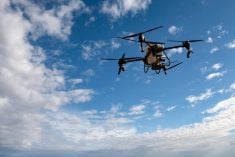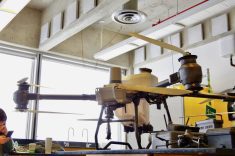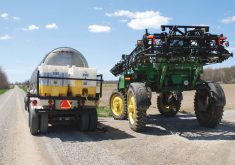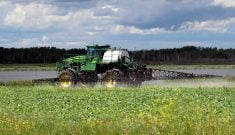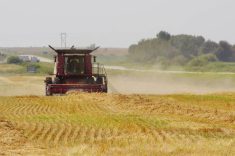With another taxing spray season upon Manitoba farmers, the Co-operator is digging into its archives to present you with some previously-published information on navigating these challenges.
Waiting for the ideal spray day is about as productive as chasing unicorns, says spray application specialist Tom Wolfe.
That’s why learning to deal with less-than-ideal conditions is essential.
Read Also

Manitoba boosts stake in cereals centre to $20 million
Premier Wab Kinew said the additional project funds will help ‘Trump-proof’ the provincial economy.
Wolfe, who works with Agrimetrix Research and Training and runs the website sprayers101.com, took that message to attendees at Brandon’s Ag Days in January.
“Wind is the barometer for deciding whether it’s a good spray day,” says Wolfe. “And whether that’s right or wrong, it is the deciding factor.”
Drift is the biggest concern when spraying in windy conditions. Wolfe worked on a drift study to determine the best practices for dealing with the issue.
“We did 21 trials here. We used a pull-type sprayer and a self-propelled sprayer. On the pull-type, we used a low boom and a low travel speed, and on the self-propelled unit, we used a high-boom, fast travel speed.”
A medium-quality spray nozzle on the low-speed, low-boom sprayer resulted in a drift profile of about 2.5 to 3.5 per cent. But when a very coarse spray was used, the drift was much less.
“If you install a low-drift nozzle on the sprayer, you will see a four-fold reduction in spray drift,” says Wolfe.
Larger droplets are less likely to get caught in the breeze.
“You can spray under much higher wind conditions with a coarser nozzle and still have the same amount of drift.”
But Wolfe says droplet size only goes so far. On trials with a higher speed and higher boom, there was only a two-fold reduction in drift over the medium-quality spray. So, it’s imperative that in very windy conditions, travel speed and boom height be taken into consideration.
“Spray quality, boom height, travel speed and wind speed are the big hammers,” says Wolfe.

Too calm
Why not spray at times of day when it’s calm?
“If you choose to spray early in the morning or late in the evening, or even overnight in Manitoba, chances are you will be spraying in an inversion,” says Wolfe.
An inversion is a meteorological phenomenon in which a layer of warm air sits above a layer of colder air, trapping pollutants and other particles close to the ground.
“Inversions happen 70 to 80 per cent of the time, from the evening into the early morning, every single day during the spraying season in the central Great Plains,” says Wolfe. “The risk is that it lingers.”
[RELATED] Grainews: Deere launches See and Spray Ultimate
When spraying for weeds during an inversion, chemicals can be trapped in the lower layer of air and linger for an extended time. Where they end up is unpredictable and could endanger crops.
“You don’t know which side of the field you’re spraying is actually in danger,” says Wolfe.
“Winds will eventually come up, and they will move that spread out somewhere else. We’ve really shut the door on night spraying, early morning spraying or evening spraying, and that means we’re left with the peak of high wind.
“And really, I think that’s where we’d have the greatest opportunity to do a better job.”
Dense canopy
If a dense canopy requires active ingredient delivery down to the stems, the first thing to do is assess the canopy and determine whether you can see the bottom.
The next step is to conduct a test with water-sensitive paper to see where the spray reaches.
Water-sensitive paper can be placed in the field before the spray is applied. The paper will change colour when it comes in contact with the spray, indicating which areas of the crop have been treated.
Stains on the paper are irreversible and can be stored for a few years. However, unstained portions will continue to react to moisture from humidity, dew or fingerprints, so care must be taken in handling and storage.
Just add water
“Water volume is your big hammer here,” says Wolfe. “It takes time, it takes effort, but when you simply have to go through that canopy, there is really no other tool.”
Higher water volumes can be achieved by simply travelling slower. Wolfe also recommends keeping the boom as low as possible.
Dry conditions
The main concern with spraying in hot, dry conditions is rapid evaporation of the spray. Droplets can evaporate from the time they are released until they hit the ground.
“The best tool for reducing the effect of hot, dry, high-evaporation conditions is to use a coarser spray,” says Wolfe.
A fine spray and resulting smaller droplets hang in the air longer, so they have more opportunity to evaporate than larger droplets from a coarser spray.
While these tips can help farmers increase productivity in less than ideal spraying conditions, Wolfe says the most important tools are a stopwatch and a notepad.
“You’ve got to be honest about how you spend your time. And if you’re spending a lot of time filling, cleaning or fiddling while you’re running, you’re not making the best use of that spray day.”


